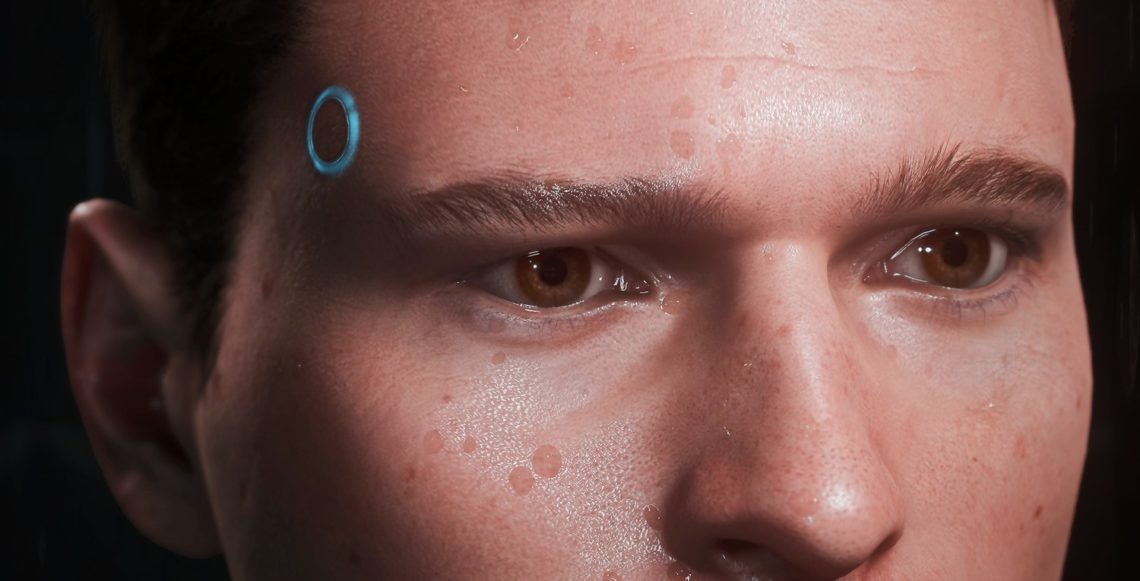
Detroit: Become Human PC Review
Detroit: Become Human arrived on PC in December 2019, but I took some time to test it out properly due to the many problematics that seemed to affect the majority of players after release. Now that I completed my second run of the game on laptop, I can properly review the technical aspect along with the narrative side.
Please note that this is related to the Epic Games version, I can’t speak for the Steam one although I assume things will work the same way. Moreover, this review is not entirely SPOILER free, so beware all ye who enter here!
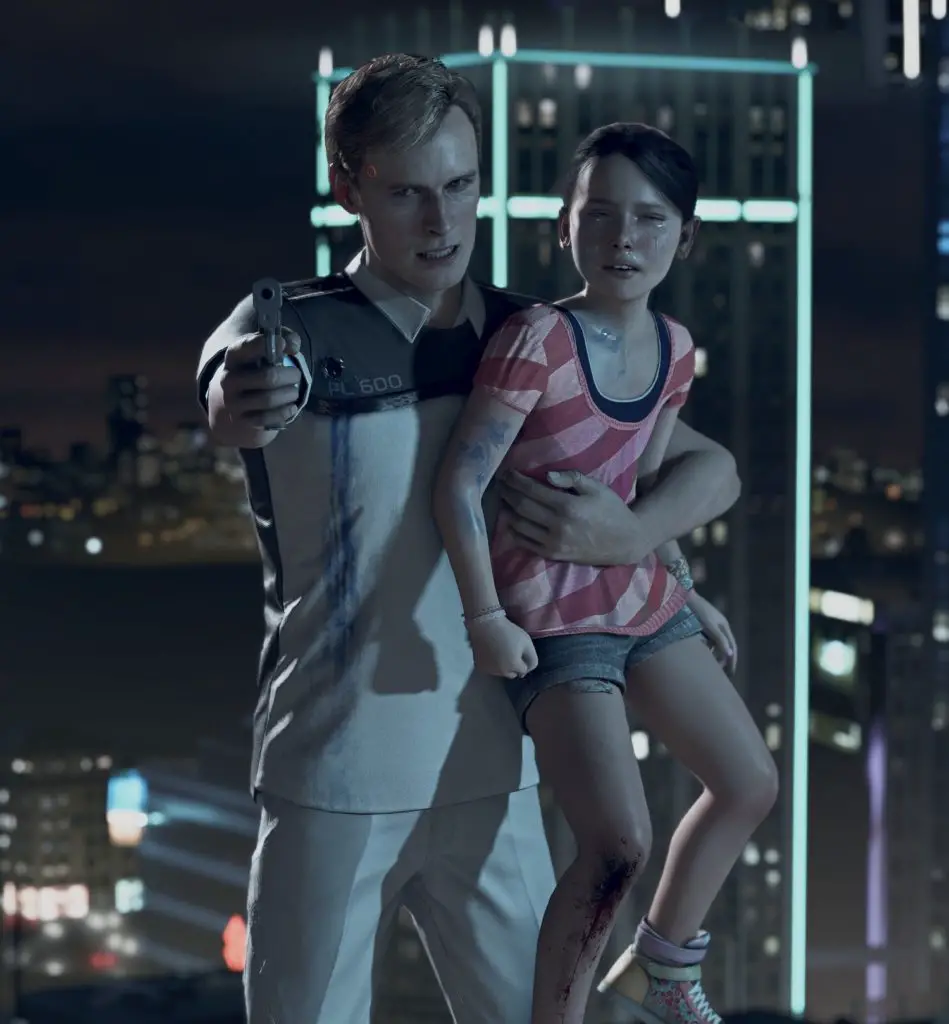
Detroit: Become Human is a cinematic choice-based game developed by Quantic Dream and written by David Cage, released exclusively for PS4 in March 2018. The story has been shaped over the tech demo from 2012 KARA, already featuring the extraordinary Valorie Curry as lead actress for the motion capture. Kara is one of the three playable characters in the game and this short was not originally intended to become a full installment, considered just a concept and real-time test for the old gen console at the time.
In 2015, Quantic Dream released an official reveal trailer during an E3 conference, where only Kara appeared as the main character reviving the events shown in the tech demo and walking around a futuristic Detroit. The second lead character, Connor, has been introduced with another E3 exclusive announcement in 2016, which showed us part of the first mission and explaned the funcionality of choices. Markus, the third and last protagonist to present, appeared the following year with the final character trailer.
Story and Gameplay
Detroit is portrayed as a technological city in 2038, where humanoid machines have been built to assist the humans as their caretakers, daily helpers and even sexual partners for rent in clubs. However, the androids have soon become an actual replacement for employees, forced to take over their jobs and generating a cycle of protests in the streets followed by a worrying social fallout due to an arising financial struggle. To the people of Detroit, androids are nothing more than plastic tools with no consciousness to mistreat and break apart whenever they please, held accountable for the growing unemployment in the city. However, something in their installed program is mutating and spreading among their kind like a potent virus; this epidemic called Deviancy is going to awaken the androids and make them step into the world of the living with their own free will, feelings and personalities.
Are you ready to pick a side and face the upcoming revolution?
The game’s theme revolves around different matters like corruption, drug usage, depression, trauma, abuse, family and LGBT relationships. The events in Detroit: Become Human take place within a week, but such a short time is more than enough for our protagonists and side characters to enstablish unbreakable friendships and even romantic bonds.
DBH is a cinematic adventure at most, but the level of stress and anxiety you can experience along the way is definitely high. You won’t get spared in the first chapter either, where your choices can already determine Connor’s path and a little girl’s fate. The amount of details in this game is incredible; the little fish on the floor that you can put back into the tank, Markus being visibly out of place among other androids in their bus compartment, the futuristic look of the city mixed with elements from our time.
The game is not open world unfortunately, so your movements will be limited and you won’t be able to walk too far from the main area.
As soon as you complete a chapter, you are prompted to continue to the next one. Still, if you aren’t happy with what you got after a potentially wrong choice, you are free to get back to the main menu and replay that part again to change the course of events.
The game has two different difficulty levels, Carefree (easy) and Experienced (hard). The difference between the two modes is mainly about controls and timing, as you have an easier button setup during fights and potential accidents with the casual setting. Death chances will increase with the difficult mode and the controls will be more challenging.
The Main Characters
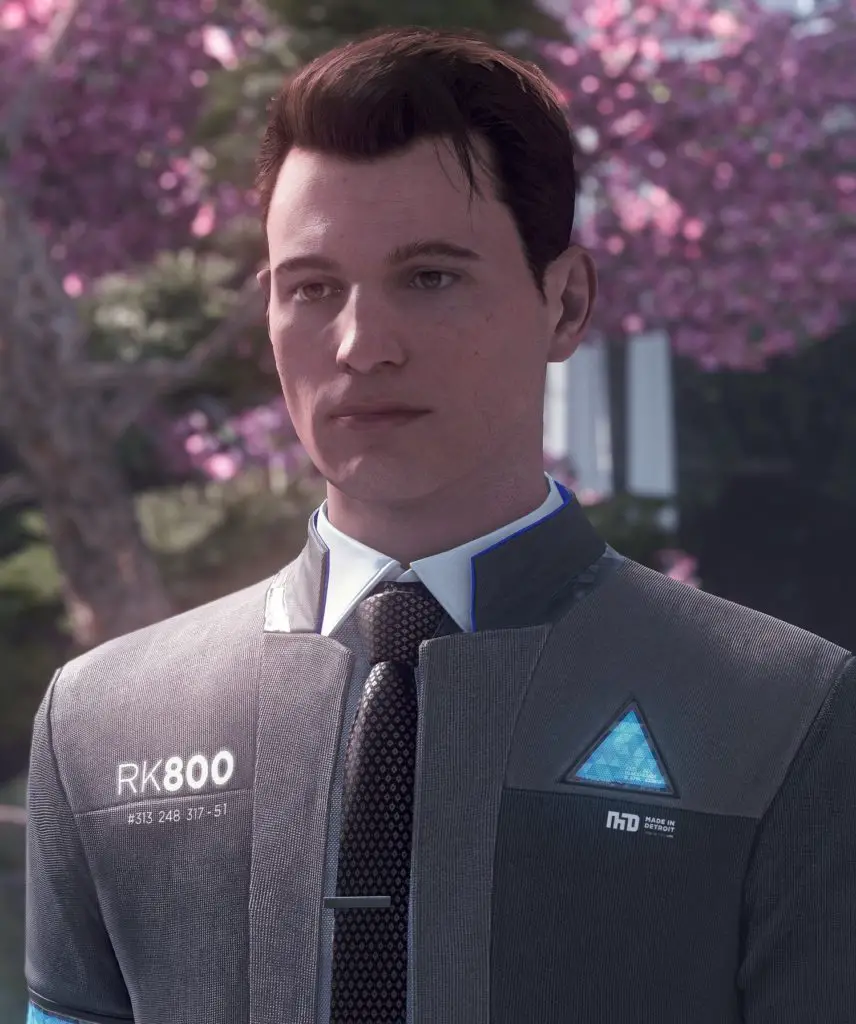
Connor is introduced in the very first chapter, The Hostage, as the android sent by Cyberlife to investigate deviant behaviors and stop his own kind from rioting against humans. Connor is a unique model specifically created to become a deviant hunter, he can analyze clues by collecting data and licking samples to determine their source.
Connor’s route in the game is split in two paths; the player can decide to pursue his own deviancy, or to make him become a calculated killer machine. Connor is the last one to eventually shift, only if you have experienced a certain number of program instabilities you will unlock the second path and play the final chapter accordingly. Needless to say that the more compassionate and empathic he will become following your choices, the more his program will crack.
He also is the only character that can die and come back more than once; should you happen to get him killed by accident or through a bad choice, Cyberlife will immediatly upload his memory to a new, identical android that will replace the old one to continue with the designated task until the end. This should not affect the blue (deviant) path though if you had enough instabilities to raise the bar as stated.
Connor is played by Bryan Dechart (he regularly streams on Twitch with his wife Amelia Rose Blaire, who also plays a NPC in Detroit Become Human).
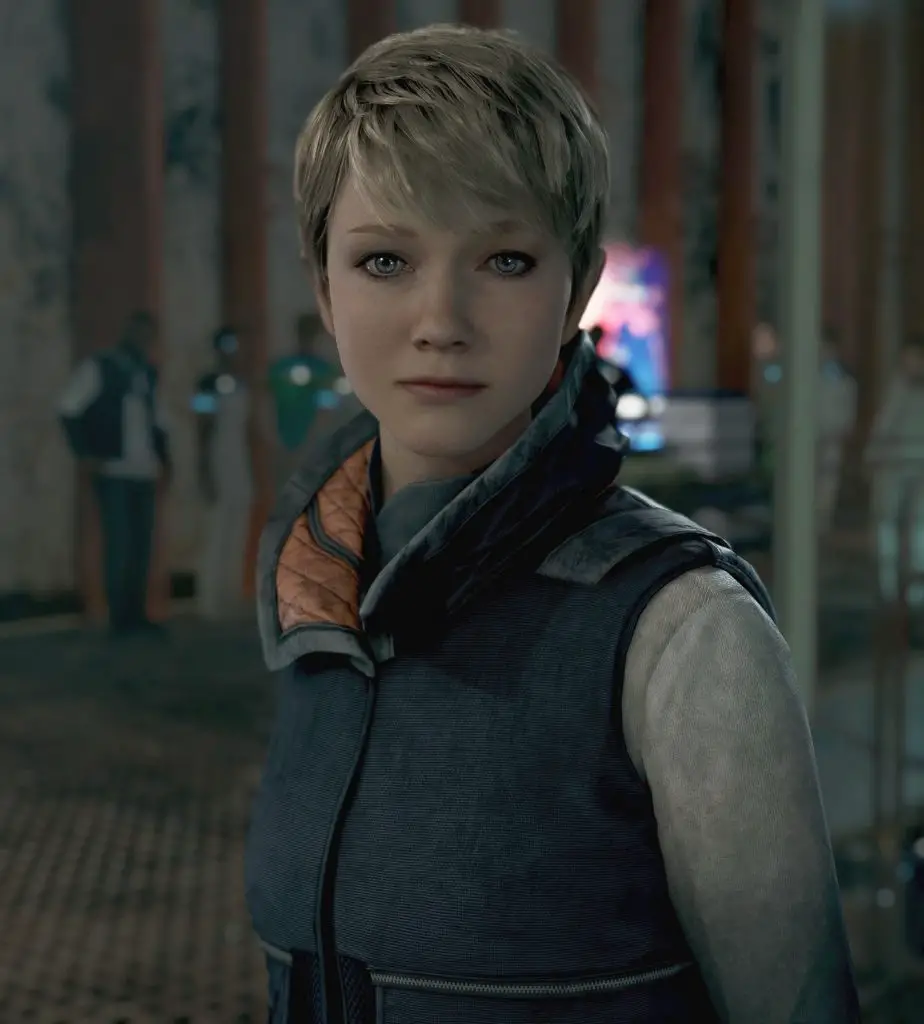
Kara was the first DBH character people ever came to know thanks to the 2012 tech demo. The players will meet her in game as soon as the first mission is complete and before the opening cinematic.
She is not a unique model as we’ve seen in the short, but there didn’t seem to be a lot of Karas around in comparison to other recurring androids.
At the beginning of her story, Kara is given back to her owner after getting hit by a car, or so it seems. The repairs unfortunately caused a total reset in her system, erasing all her memories and bringing her state back to factory settings. For this reason she fails to recognize the man’s daughter, Alice, to whom she was very close prior to the incident that damaged her body and virtual brain. Still, Kara can get fragments of her lost memory back upon finding triggering objects or papers while cleaning around the house, awakening specific events she was supposed to completely forget, but that somehow remained stored into her system.
She is the first character breaking through the blocking program and embracing deviancy to save Alice from her abusive father (it is implied that she already did it once before) and take her away to seek a safer place where they can live together as a family.
In order to deceive the humans and keep a low profile for both Alice’s and her own sake, Kara needs to remove her LED circle and cut her hair short. You get to choose among four different colors for her strands at that point; brown, blonde, silver and black. Your choices can determine her fate, as she can die in multiple ways and at different times.
Kara is still voiced and motion captured by Valorie Curry.
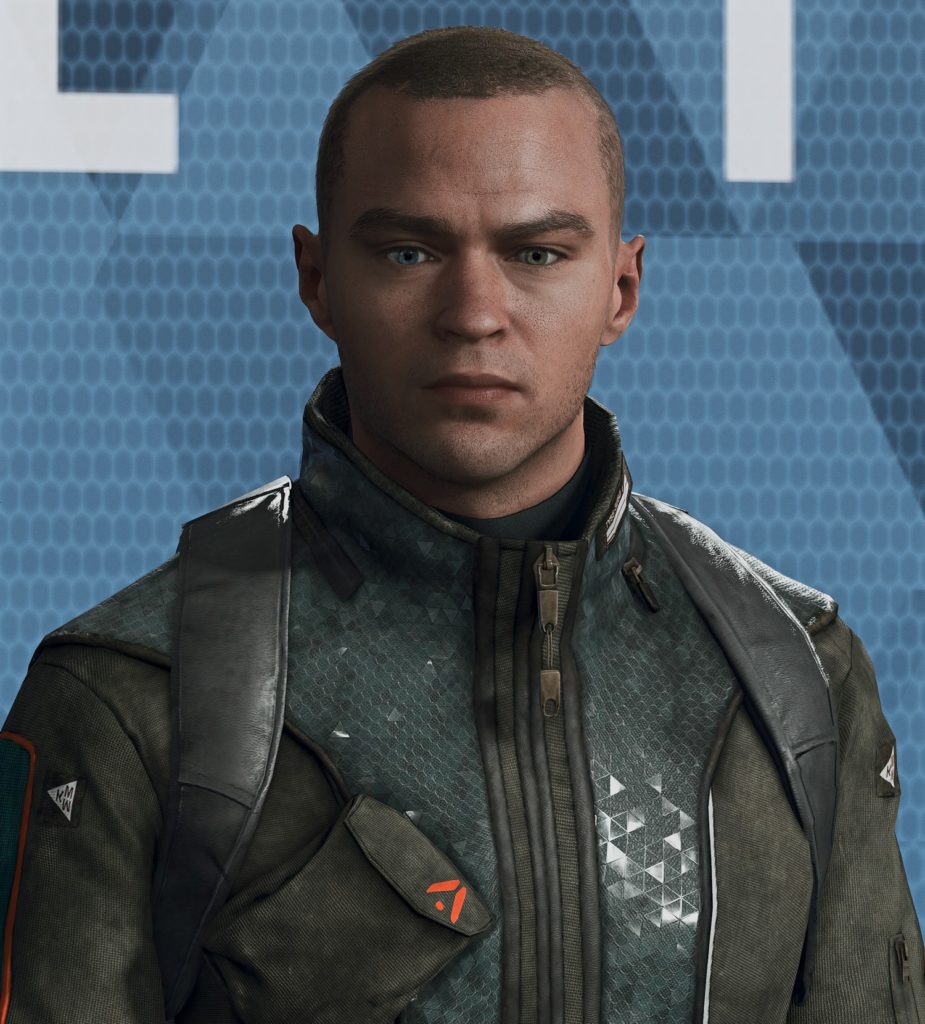
Markus is the android that can lead the revolution in the game if everything goes as intended. He used to take care of his human owner Carl Manfred, although he’s been treated more like a son than an actual caretaker machine. Markus managed to give the man hope and comfort after the accident that forced him onto a wheelchair and the critical relationship with his biological son Leo who became addicted to drugs.
Markus breaks through his program right after Kara, with Leo showing up into his father’s studio one night to steal some of his paintings in favor of money. The consequences are far from positive then, with the android getting shot by the police and sent straight to the junkyard to permanently shut down. While he recovers from his ‘injuries’ and escapes that horror land to move forward as a new living being, Carl’s physical conditions deteriorate due to the excessive amount of stress he experienced if he survived the night.
Markus will then seek Jericho, a secret hideout for androids, decrypting specific clues in town. Jericho’s a place where his people can hide from the humans and their cruelty, many of them appear to be partially broken or already on the verge of death.
Just like Kara, Markus can die in a few different occasions and various parts of the story. If he gets killed before the revolution can take place, a side character will lead the group of Jericho instead resulting in a shortened plot with a good portion of choices removed. This will invitably prevent the player from taking very important decisions that would shape the final outcome accordingly.
Markus is a unique model as well and his route is also split in a path of light and one of darkness. The player will need to decide wether or not to lead the androids as a pacifist leader, or to rely on violence answering fire with fire.
Markus is played by Jesse Williams.
The three characters will interact with each other for the first time in the Crossroads chapter. If Kara and Alice fail to reach the station without being noticed by the police earlier in the story, Connor can chase them with the sole intention of capturing the two for interrogation, but it is bound to fail. If you go through this event in your playthrough, he will apologize to the girls for being so blind and acting like a machine following the wrong orders at the time (unless you went for the red path instead). Connor and Markus will even share a rather short, but deep conversation before that, a crucial part in Connor’s final awakening or alternative machine storyline.
The Side Characters
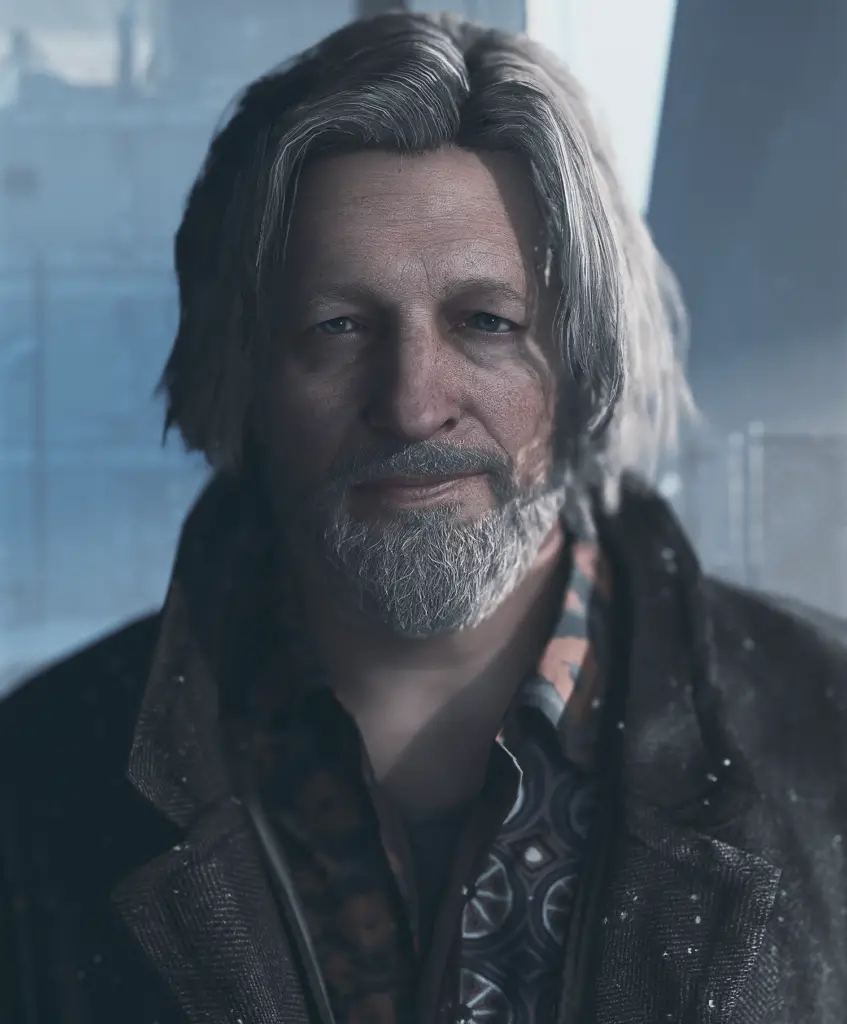
Connor’s side: Hank Anderson.
Hank is a human detective assigned to Connor as his partner for the investigations. The man is extremely skeptical and unhappy about the assignment at first, holding a palpable grudge against androids for personal reasons that will be explained later on should he be still alive. While Hank is not a playable character, his destiny is also linked to the player’s choices and the way Connor’s persona is shaped. The man can also willingly shoot Connor himself once if his opinion of the android is not high enough.
Connor’s deviancy path will see the two grow particularly close at the end of the game and develop a father-son relationship.
Kara’s side: Alice, Luther, Rose and Jerry.

Alice represents a key role in Kara’s development, as she becomes like a daughter to protect at all costs. The girls will meet Luther as an enemy, but the incredible bond between Kara and the little girl will be so moving and inspiring to him that he’ll break the program’s boundaries and assists them against his dangerous owner. To redeem himself for obeying the man and putting their life at risk, Luther will join the two in their journey to salvation with the sole intention of keeping them safe.
As his first accomplishment, Luther will bring Kara and Alice to Rose, one of the very few humans hiding Deviants from the authorities and eventually helping them cross the border to escape Detroit’s laws.
Jerry is one of the many identical androids Kara, Alice and Luther will find into an abandoned amusement park, which they’ll use as shelter to keep the little girl warm. That brief encounter will spur him and his companions to finally leave the place they’ve been stuck into for a very long time. Both Jerry and Rose will be part of a very important decision, along with Luther and Kara herself in the grand finale if they all reach the border safely.
Note: On game release, Luther got featured in his own movie short.
Markus’s side: Carl, North, Simon and Josh.

Carl covers a vital role for Markus despite hi short screen time. His fate is more or less the same no matter how you play the game, but the outcomes can be altered and improved at the beginning of Markus’s deviancy. If Carl survives on the spot, the man and the deviant will meet one more time before the revolution.
North, Simon and Josh are the first androids Markus will talk to upon finding Jericho. The three of them can be kept alive throughout the entire story, or die beforehand in different circumstances. North can also be a potential love interest for Markus, but it is not a mandatory option. The main progress of the game will remain unchanged and will not affect your ending in case you decide to skip it.
Additional characters: Elija Kamski, Amanda and Chloe.
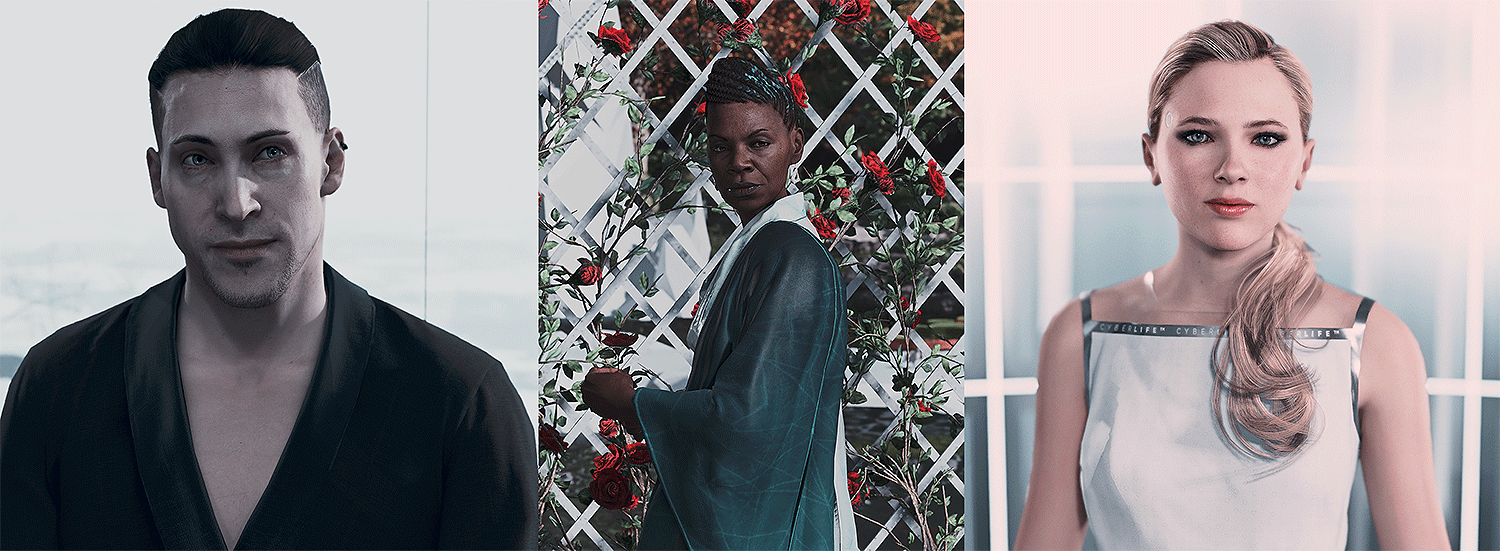
Kamski appears only once in the game, but he covers quite an important role as the Cyber Life founder and androids creator. In fact, Kamski was the one who gifted Markus to Carl Manfred after the accident. It is unclear whether or not he actually roots for his own creations or simply takes pleasure in watching the two races committing a blood-shed, but he will offer Connor a clear hint about what may save the latter from a particularly controlling situation.
Kamski got his own special movie short and will show up in the game’s epilogue if all the main characters die in your playthrough.
Amanda is an AI guiding Connor in his Mind Palace and pushing him further against the deviants. Her place is designed like a beautiful Zen Garden that seems to be affected by a time limit. The more the hours pass, the more Amanda’s reign will get consumed by what it looks like a drastic and constant seasonal change.
Chloe is the first android perfected by Cyber Life and the hostess assisting you from the main menu. She lively talks to the player mentioning historical events, quotes or even joking about a corrupted save. The more you play through the story, the more she will react to your progress and develop in the end.
Chloe appeared in a special video as well and in the announcement of Quantic Dream detaching from Sony in a very interesting way.
Three identical Chloe models can be found at Kamski’s place.
Performance
The PC port was unfortunately poorly optimized upon release. Many users have reported various crashes in different parts of the game, or even a complete launch fail on Epic Games. One of the most common errors affecting the game seemed to be the VK_ERROR_DEVICE_LOST, happening out of nowhere and crashing the whole application at once.
When the game came out I played the first mission without any problems, but still decided to put it aside for a while due to the many issues people got in different chapters. When I launched it again after the patches applied, I found myself completely stuck at the beginning of Kara’s introduction. The game was completely unplayable after the first mission, throwing a VK_ERROR at me whenever I tried to continue from that point. My graphics drivers were up to date, I could set the overall quality to High and Ultra settings as I met all the hardware requirements and yet something was preventing me from playing properly.
Realization hit me when I checked the specs again and noticed that my OS was not listed in the minimum requirements. DBH is in fact mainly compatible with Windows 10 and not optimized for Windows 7. Once I switched to my Win 10 laptop, everything worked fine.
Quantic Dream released a documentation for technical help here.
Update 01/14/2021: I made a short guide about the VK_ERROR with a couple potential fixes here!
Photo Mode
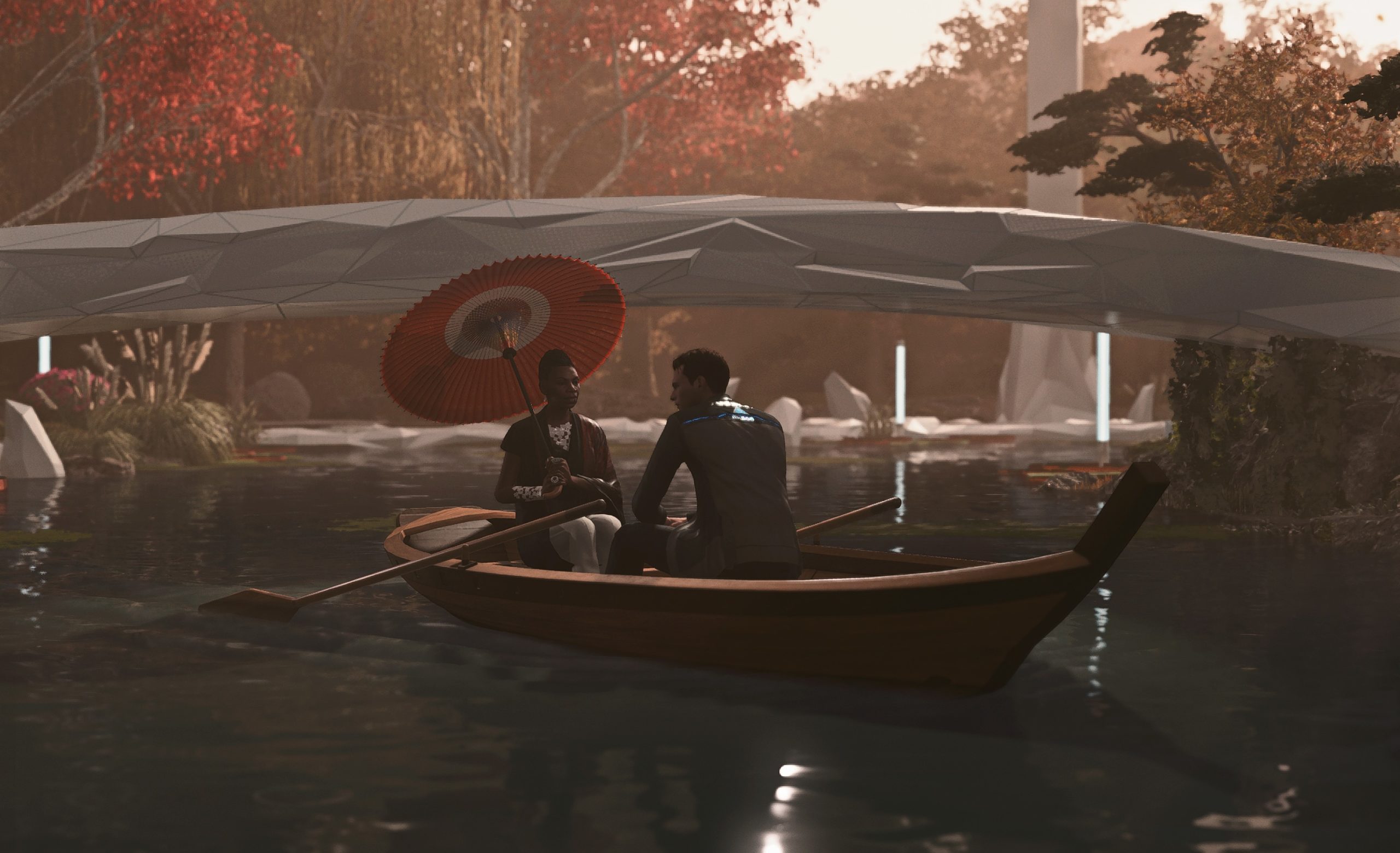
Something I was honestly expecting and really looking forward to with the PC port was a Photo Mode. Quantic Dream was developing one for the PS4 version, only to scrap it later in the works because it would make the game too heavy and difficult to run on console. Not only the game had no Nvidia Ansel support at all, but the PM wasn’t included either.
The very well known Otis_Inf aka Frans Bouma developed his own camera tool for the game after months of work and you can subscribe to his Patreon page to download it. I highly recommend supporting him on Tier 1 at least if you are into virtual photography, you can already grab a bunch of past releases for different titles.
The photo mode for DBH is a standalone application that allows you to:
• Pause the game wherever you want (even in cutscenes)
• Activate the free camera
• Change the field of view
• Play around with the in-game depth of field for different results
I experienced a couple crashes at random times when the tool was active, other than that it is pretty stable and functional even after the most recent updates.
All the screenshots you see posted in this article have been taken with Frans Bouma’s tool.


amzn_assoc_placement = “adunit0”;
amzn_assoc_search_bar = “false”;
amzn_assoc_tracking_id = “pcgamexp-20”;
amzn_assoc_ad_mode = “manual”;
amzn_assoc_ad_type = “smart”;
amzn_assoc_marketplace = “amazon”;
amzn_assoc_region = “US”;
amzn_assoc_title = “My Amazon Picks”;
amzn_assoc_linkid = “df91c2cf7d85f9191ab65addf9da206e”;
amzn_assoc_asins = “B07K1XLCH5,B07MZL1TDY,B07Z21FC22,B07VBK4SYS”;